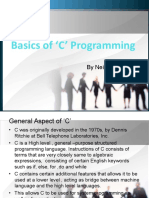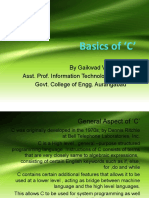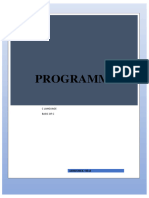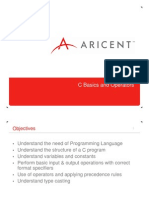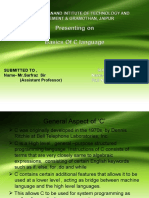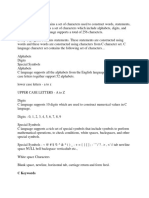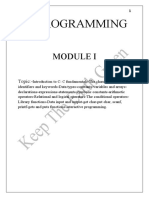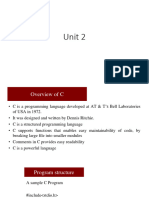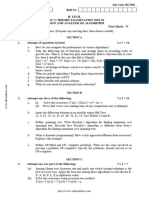0% found this document useful (0 votes)
21 views104 pagesMod 1
The document provides an introduction to the C programming language, covering its evolution, structure, and fundamental concepts such as data types, variables, constants, operators, and arrays. It explains the development stages of C programming, including editing, preprocessing, compiling, and linking, as well as the character set and tokens used in C. Additionally, it discusses input/output operations, string manipulation, structures, and pointers, highlighting the language's versatility for both system and application programming.
Uploaded by
Dimple BNCopyright
© © All Rights Reserved
We take content rights seriously. If you suspect this is your content, claim it here.
Available Formats
Download as PDF, TXT or read online on Scribd
0% found this document useful (0 votes)
21 views104 pagesMod 1
The document provides an introduction to the C programming language, covering its evolution, structure, and fundamental concepts such as data types, variables, constants, operators, and arrays. It explains the development stages of C programming, including editing, preprocessing, compiling, and linking, as well as the character set and tokens used in C. Additionally, it discusses input/output operations, string manipulation, structures, and pointers, highlighting the language's versatility for both system and application programming.
Uploaded by
Dimple BNCopyright
© © All Rights Reserved
We take content rights seriously. If you suspect this is your content, claim it here.
Available Formats
Download as PDF, TXT or read online on Scribd
/ 104
